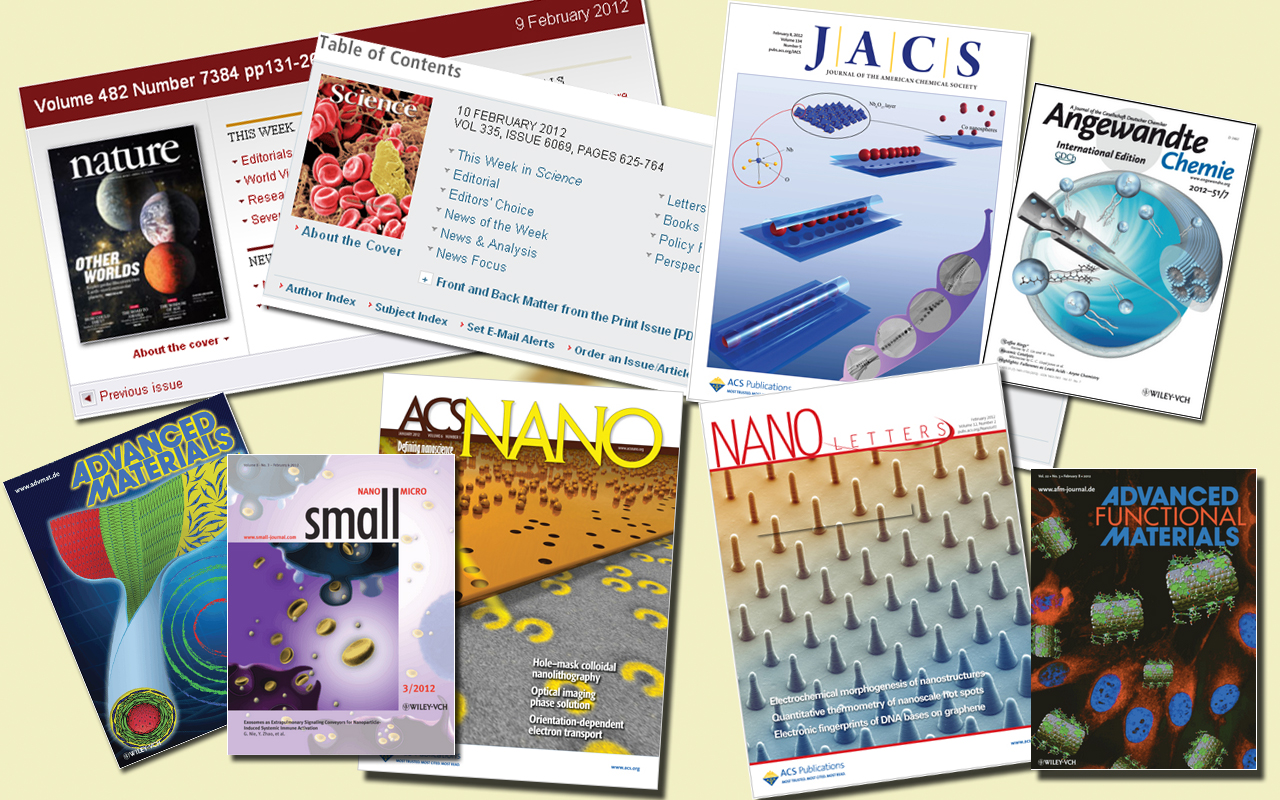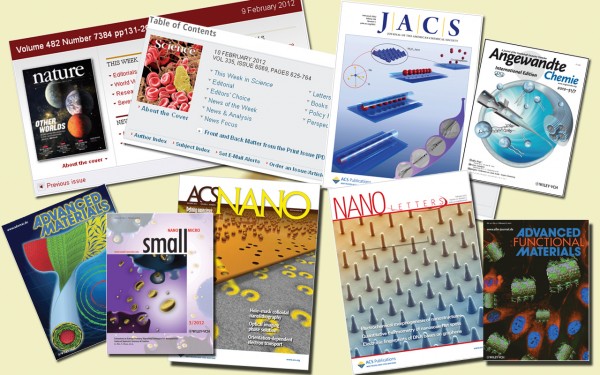These are the numbers of papers published in the journals that I skimmed/read last year. Data (of the year 2010) are taken from Journal Citation Report.
- Nature: 862
- Science: 862
- Nature Chemistry: 143
- Nature Nanotechnology: 130
- Nature Materials: 137
- Nature Physics: 158
- Nature Photonics: 105
- Nature Communication: 149
- Chemistry Review: 188
- Angewandte Chemie International Edition: 1652
- Nano Letter: 855
- Advacned Materials: 777
- ACS Nano: 986
- Energy and Environmental Science: 198
- Journal of American Chemical Society: 3139
- Advanced Functional Materials: 481
- Small: 388
- Chemistry Communication: 2416
- Journal of Materials Chemistry: 1352
- Chemistry of Materials: 833
They add up to a total of 15, 811 papers, which is 1217 papers per month, or 304 papers per week, or 43 papers per day. Obviously, I didn’t read them all. For most of them, I only browsed over the title and the TOC image (sometimes only TOC image). For the few that I found interesting, I downloaded the pdf files and went through their figures and abstract and conclusions. My strategy of reading was this: 1) Skimming: Star each interesting/relevant paper in google reader, 2) Go over figures and abstract of the starred papers, and save them on my hard drive, 3) Reread the downloaded papers. All sounds great, except that I hardly found myself doing the last step, the most important step, rereading. I feel that I am creating an illusion for myself that I actually read those papers. More importantly, what was originally exciting and mind-opening has now become a burden, even a waste of time. It’s time to step back and think how I should read papers .
“Relevant and significant, novel and timely” are the criteria that I learned from Geoff for sifting through ASAP papers. How to apply these criteria is a judgment call. Take significance for example. The easiest way to apply this criterion is to refer to statistics, like the journal impact factor, which is what I do. And at one point last year, I had to remove Chem Comm, JMC, and Chem Mater from my browsing list, not just because their journal impact factor is lower than the rest, but also because they publish too many papers and I couldn’t keep up with the pace. On the other hand, I know there will be good papers in those journals that I will miss. There is a trade-off. I finally decided to remove them from the list, because I think what I learned in those journals do not justify the amount of the time I spent browsing them. In other words, the efficiency for learning is low.
Looking back on how my research was done and how the papers were written. I found the most relevant and significant papers, in terms of whether I actually cited my papers, are often found through search engines such as ISI, Scopus, and SciFinder, or through the references of the papers that I actually read in depth. In these two cases, I have a rough idea of what I am looking for. Just like shopping in a mall. One can spend hours and hours doing window-shopping, but if one knows what he needs to buy, it takes only a few minutes. Knowing what information I am looking for increases the efficiency of learning enormously.
However I don’t always know what I am looking for. There is always this curiosity, this eager to see what’s new and what’s next, that keeps me browsing.
Maybe the real problem is that I am trying to find consistent criteria throughout all my paper-reading, including browsing, which is mostly for curiosity, and rereading, which is mostly for active projects. It seems that it would be easier just to use two different sets of criteria instead of one. Maybe the strategy for browsing is no strategy at all. Read, just for the fun of it.

